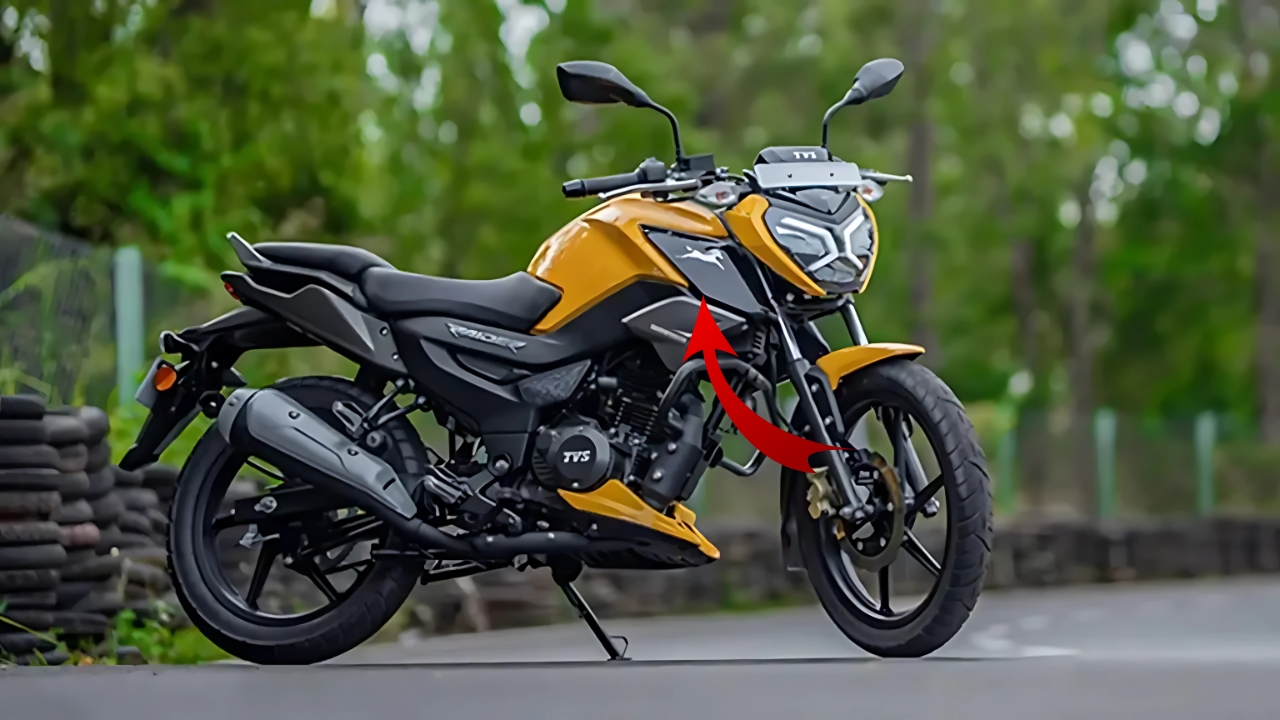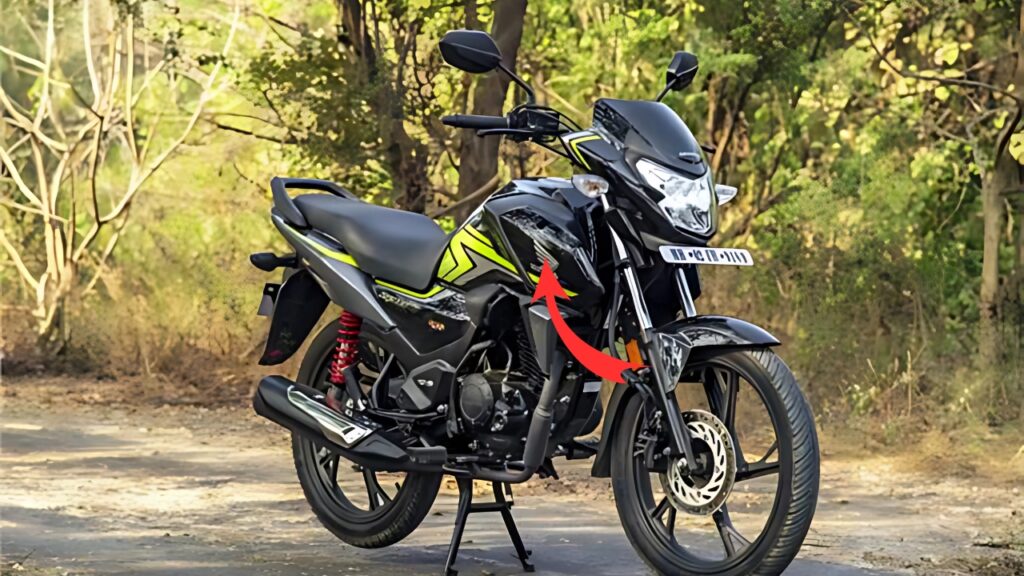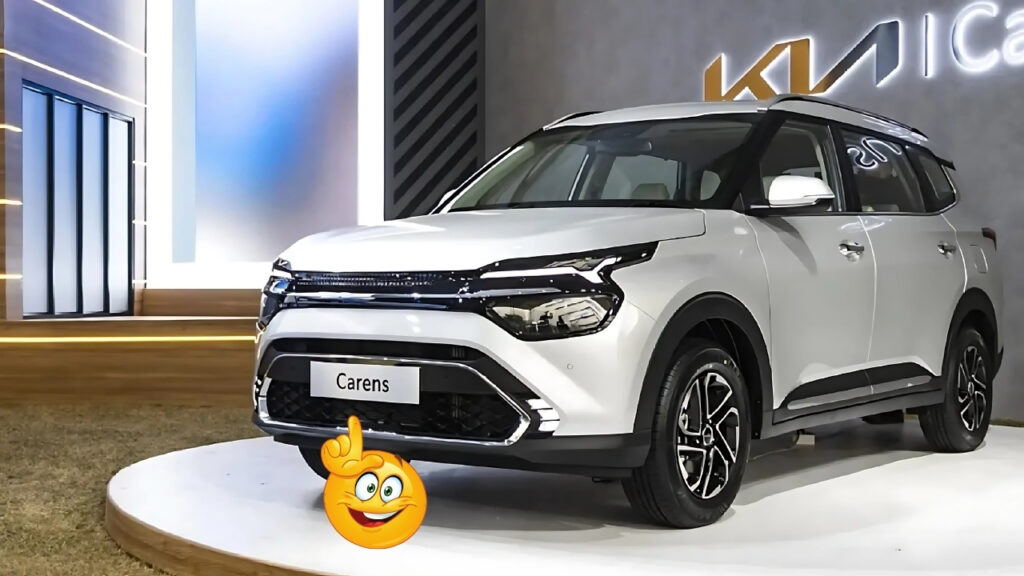TVS Raider 125: The Raider rids itself of typical commuter aesthetics on purpose, instead opting for an angular facade which helps the vehicle stand out while still not sacrificing usability.
A unique LED headlamp with Sportster-style horseshoe LED daytime running light creates an instant visual signature, while the sculpted fuel tank with prominent extensions allows for better knee placement and visual weight.
A side profile with beautifully proportionate aspects that favour the sporty side of the design language while still providing comfort-oriented lines gives a lot away, while the rear of the RN22e benefits from an LED setup that aims to do two things — boost visibility and look fresh at the same time.
Its split seat design, along with the use of textured upholstery, gives it a premium feel, while also making it more comfortable for both rider and pillion.
Available in vibrant colour options of Fiery Yellow and Racing Red, the Raider caters to the customization needs of the playful audience it aims to woo.
The quality of the paint finishes and graphic applications is better than you would normally expect in this segment and strengthens the positioning of the motorcycle as more than just the practical getter of you from point A to point B.
Table of Contents
TVS Raider 125: Performative Dynamics- So Much More Than Just Transportation

Powering the Raider is a 124.8cc single-cylinder air-cooled motor capable of producing 11.4 PS at 7,500 rpm and 11.2 Nm at 6,000 rpm.
These figures may seem modest in absolute terms but represent class-leading output that delivers in-lively performance courtesy of the motorcycle’s relatively low 123kg weight.
Its engine uses a 3 valve Ecothrust fuel injection technology developed by TVS that ensures combustion efficiency and responsive performance, and also provides said mileage of about 67 km/l in a controlled environment.
This “two-for-one” deal masters the emotional need for a “fun” drive with the technical need for user-friendly efficiency.
Last but not least, the Raider boasts selectable riding modes — Eco and Power — which tune throttle response and engine character to favor either efficiency or performance, depending on rider preference.
This is a feature that has only been previously available on more premium motorcycles, recognizing that commuter riders need adaptable performance profiles just like the rest of us as they experience a variety of usage scenarios.
Integration of Features: High-end Sensation
The Raider stands out through thoughtful feature multiplication, elevating the ownership experience above segment standard.
You also get a full LCD instrument cluster that displays information about gear position indicator, riding mode and real time fuel efficiency.
Bluetooth connectivity, along with call and message alerts when paired to a smartphone are available on the higher variants.
The available LED lighting package throughout the vehicle provides visibility and adds a modern touch, and a USB charging port meets the fact that mobile devices are integral to everyone’s daily lifestyle.
To meet the commuter rider’s occasional need for cargo capacity, the underseat storage compartment with optional USB charging offers practical utility for necessities.
Perhaps the most interesting part of the amenities list is the presence of a side-stand engine inhibitor and side-stand indicator to prevent accidents caused by a forgotten side-stand.
These thoughtful touches are indicative of TVS’s more holistic approach to product development than just headline figures.
Riding Experience: A Balanced Sophistication
Chassis development makes the Raider perfectly capable of achieving a balance between engaging riding and cruising comfort.
The monoshock rear suspension, uncommon outside the premium class, has major benefits in terms of wheel control over a twin-shock arrangement and also improves the ride quality and precision to handling.
The telescopic front forks have been tuned with damping characteristics to soak up road input without sacrificing cornering composure.
The ergonomics of the seating strike an effective compromise in sport positioning and commuter comfort, with the handlebar positioned relatively upright to minimize wrist strain on longer journeys while still offering enough control for spirited cornering when the impulse arises.
A 780mm seat height caters to riders of different height profiles, along with the textured seat material which aids in grip and ventilation in different weather conditions.
The braking performance is also well thought out, featuring a 240mm front disc brake mated to a 130 mm rear drum, both riding on a linked braking system that applies breaking force proportionately to help bring the bike to halt with the best possible stability in emergency situations.
But this balanced chassis development approach produces a motorcycle that can both be comfortable on the daily grind while also being capable enough for weekend leisure outings that the envelope of usage stretches beyond what most commuter bikes tend to allow.
Significance and Impact on the Market
The Raider’s positioning gives a nod to TVS’s awareness of changing consumer sensibilities in the commuter segment, where younger customers want products that not only get them from point A to point B but do so with a certain amount of emotional appeal.
TVS has essentially reset the game for what an entry-level 125cc motorcycle can be, by offering features and performance that would normally only be available in more uptown segments.
Just keep it real, because in the world of many young riders, their motorcycle isn’t just transportation, it can also be a lifestyle statement and point of pride.
The Raider meets this dual requirement, showing off the practical virtues of efficiency and reliability, but adding handy touches that provide actual owner satisfaction beyond function.
TVS Raider 125
The TVS Raider 125 is an example of how products should be developed with a proper understanding of changing market needs.
With the Ronin, TVS has taken the promise of genuine enjoyment of the ride, care for the life of the motorcycle and ownership pride to the next level, turning this machine into an obvious positive for riders focused on value (rather than cheap transport).
In a segment that has been historically defined by conservative design and specification-led marketing, Raider proves that emotional connection and feature integration does not preclude practical considerations when it comes to making products that resonate on multiple levels.
It should put the Raider on the map though as a tempting upgrade to the stereotypical commuter offering in India, in a move towards more enjoyable, thrilling motorcycles.





